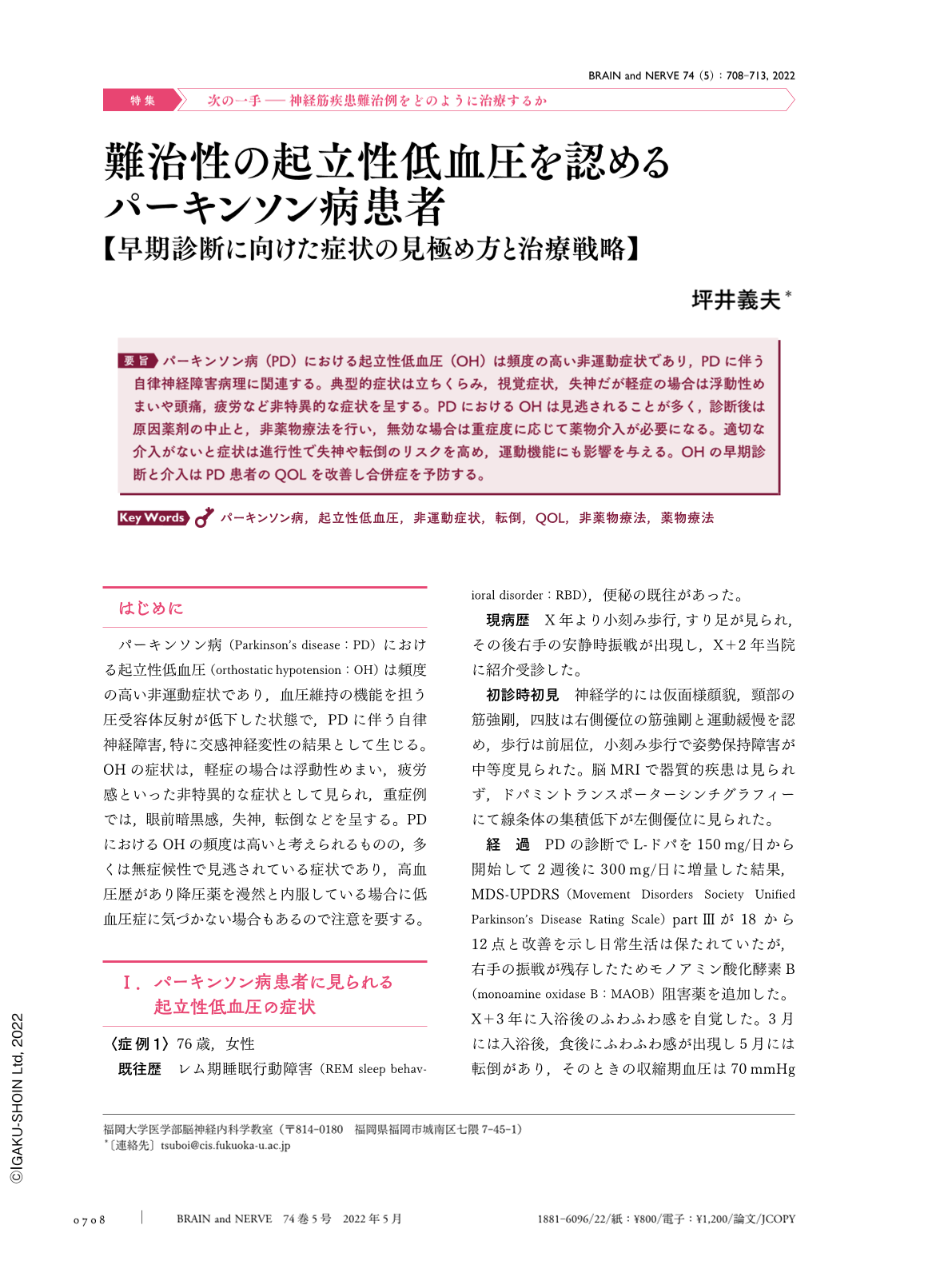Japanese
English
- 有料閲覧
- Abstract 文献概要
- 1ページ目 Look Inside
- 参考文献 Reference
パーキンソン病(PD)における起立性低血圧(OH)は頻度の高い非運動症状であり,PDに伴う自律神経障害病理に関連する。典型的症状は立ちくらみ,視覚症状,失神だが軽症の場合は浮動性めまいや頭痛,疲労など非特異的な症状を呈する。PDにおけるOHは見逃されることが多く,診断後は原因薬剤の中止と,非薬物療法を行い,無効な場合は重症度に応じて薬物介入が必要になる。適切な介入がないと症状は進行性で失神や転倒のリスクを高め,運動機能にも影響を与える。OHの早期診断と介入はPD患者のQOLを改善し合併症を予防する。
Abstract
Orthostatic hypotension (OH) is a common non-motor symptom that occurs in Parkinson's Disease (PD) patients. Typical symptoms of OH are lightheadedness, visual disturbance, and fainting; however, nonspecific symptoms such as dizziness, headache, and fatigue are observed in mild cases. Although OH is prevalent in PD patients, it is often overlooked. Further, after diagnosis, the causative drug should be discontinued and non-pharmacological therapy should be performed,; however, if it is ineffective, additional pharmacological therapy should be administered depending on the symptom severity. The symptoms are usually progressive without proper intervention, and motor functions are affected leading to an increased risk of fainting and falls. Early diagnosis and intervention for OH improves the quality of life and prevents complications in PD patients.

Copyright © 2022, Igaku-Shoin Ltd. All rights reserved.


